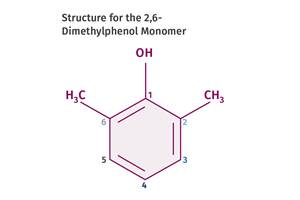New Materials and Methods for Optical Discs
The so-called “format war” has finally hit the streets.
The so-called “format war” has finally hit the streets. Movies are now available for purchase on competing versions of new higher-density DVD formats: Several titles on HD-DVD appeared in April, and rival Blu-ray discs are expected on store shelves this month. These discs up the ante on data capacity to 15 GB for a single-layer HD-DVD and 25 GB for a single-layer Blu-ray disc. (Dual layers could provide up to 50 GB per disc.) For now, the two formats will coexist in the marketplace.
So far, HD-DVD manufacturing involves no major departure from previous technology. But for Blu-ray, major changes in substrate material and coating procedures are being closely evaluated. While specs for Blu-ray discs were announced in January, the decision on how to make discs that meet those specs is up to the replicators, according to Gordon Van Dyke, technical manager for data storage at GE Plastics.
New choice of substrate
GE is developing a substrate for Blu-ray discs based on its Noryl PPO/polystyrene alloy rather than traditional polycarbonate. Noryl has never been used before in optical discs. One reason is that Noryl is opaque. Up to now, the plastic substrate had to be transparent to red laser light. But the blue laser that gives Blu-ray its name does not need to read through the substrate.
Polycarbonate disc substrates typically require a moisture-barrier layer and lacquer coating. Unlike PC, Noryl has low water absorption and also higher stiffness, notes Van Dyke. That eliminates need for secondary coatings and associated process steps. Noryl discs reportedly have much better dimensional stability and tend not to warp or tilt. “A simpler process leads to better yields,” says Steve Wyatt, GE’s global marketing director. GE brought out dedicated grades of Noryl during the first quarter of 2006.
Spin coat or laminate?
GE is also offering a new and simpler approach to protective coatings for Blu-ray discs. GE has ample experience with hard coatings at GE Advanced Materials, Silicones . Says Wyatt, “We developed a spin-coat resin that not only has hard-coat capability but also the anti-fingerprint properties mandated for recordable Blu-ray formats.” With hard-coat and anti-fingerprint functionality in one coating, the need for extra process steps is further reduced.
Degussa AG in Germany advocates a very different approach—film lamination instead of spin coating. Film lamination, a technique that has long been considered but never used for optical discs, prompted renewed attention when Singulus, Philips, and Sony reportedly told Degussa that spin coating is troublesome if you want to make a 100-micron-thick layer. Says Herbert Groothues, product-line director for optoelectronics in the High Performance Polymers business unit, “Problems arise with thickness distribution and the fact that the spin-coated layer shrinks when cured, so it affects the planarity of the disc. Also, curing a 100-micron layer is slow compared with the cycle time for disc production.”
Degussa developed a PC film for Blu-ray discs. A thickness of 92 microns ±1 micron is currently under evaluation. This film does not come with a hardcoat layer. That layer, a few microns thick, will be spin-coated on top of the film after it is laminated onto the disc.
Which is more cost-effective, spin coating or film lamination? Groothues says, “Nobody can answer this right now. Raw-materials pricing is very close for both processes, but the yield will be the deciding factor. Film lamination will start below 10¢/disc and eventually will get down to 3¢. Spin coating lacquer also comes to 3¢/disc.”
GE’s Van Dyke says the cost of spin coating is potentially lower in the long run because it is a one-step process, which means less material and lower investment for equipment. He expects that if both spin coating and film lamination can be optimized to the same degree and offer similar costs, then both processes will be used in the market. But he expects spin coating to prevail, partly because it is more familiar to the replicators.
Related Content
Prices for All Volume Resins Head Down at End of 2023
Flat-to-downward trajectory for at least this month.
Read MoreMelt Flow Rate Testing–Part 1
Though often criticized, MFR is a very good gauge of the relative average molecular weight of the polymer. Since molecular weight (MW) is the driving force behind performance in polymers, it turns out to be a very useful number.
Read MoreLanxess and DSM Engineering Materials Venture Launched as ‘Envalior’
This new global engineering materials contender combines Lanxess’ high-performance materials business with DSM’s engineering materials business.
Read MoreTracing the History of Polymeric Materials: Polyphenylene Oxide
Behind the scenes of the discovery of PPO.
Read MoreRead Next
People 4.0 – How to Get Buy-In from Your Staff for Industry 4.0 Systems
Implementing a production monitoring system as the foundation of a ‘smart factory’ is about integrating people with new technology as much as it is about integrating machines and computers. Here are tips from a company that has gone through the process.
Read MoreUnderstanding Melting in Single-Screw Extruders
You can better visualize the melting process by “flipping” the observation point so that the barrel appears to be turning clockwise around a stationary screw.
Read MoreLead the Conversation, Change the Conversation
Coverage of single-use plastics can be both misleading and demoralizing. Here are 10 tips for changing the perception of the plastics industry at your company and in your community.
Read More

























